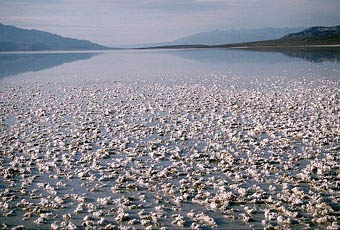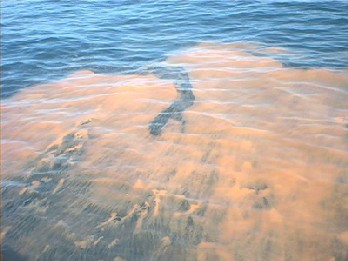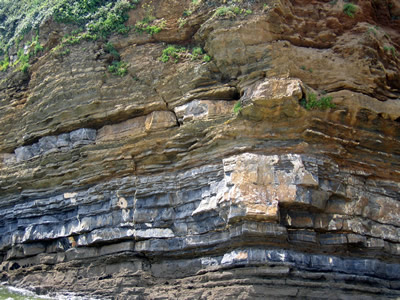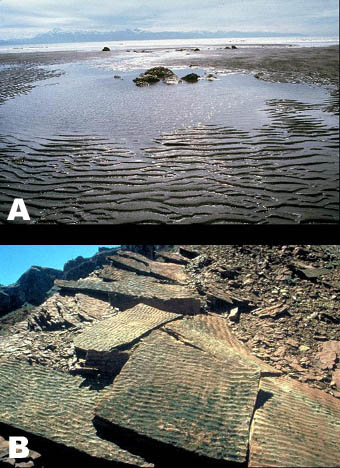Ripples in beach sand , such as those in the upper photograph (A) may someday become a rock like the sandstone in the lower photograph (B). This sandstone was part of a beach over 200 million years ago in the Triassic period.
Click on image for full size
Both images courtesy of Martin Miller, University of Oregon
What Is a Sedimentary Rock?
Sedimentary rocks make up about 75% of the rocks that are at the Earth’s surface. They preserve a chronicle of the environments and events that happened at the surface throughout Earth history, as well as the creatures that lived there.
Millions of little fragments of rock called sediment are the building blocks of a type of sedimentary rock known as clastic rocks. Sediment is found almost everywhere. It is the sand you find at the beach, the mud in a lake bottom, the pebbles in a river, and even the dust on furniture. The sediment particles are carried in streams, other waterways, glaciers, or the wind. They eventually settle out of the air or water and form a rock if they are cemented together.
But not all sedimentary rocks are made in this way. Chemical sedimentary rocks are not made of particles that come from somewhere else. They are made of mineral crystals formed by chemical processes. Organic rocks are made from the remains of living things such as clamshells, plankton skeletons, dinosaur bones, and plants.
You might also be interested in:

Rivers are very important to Earth because they are major forces that shape the landscape. Also, they provide transportation and water for drinking, washing and farming. Rivers can flow on land or underground
...more
Wind is moving air. Warm air rises, and cool air comes in to take its place. This movement creates different pressures in the atmosphere which creates the winds around the globe. Since the Earth spins,
...more
Like other types of sedimentary rocks, chemical rocks form at the Earth’s surface, are usually found in horizontal layers, and do not form from molten rock. However, unlike most other sedimentary rocks,
...more
Minerals occur naturally on rocky planets and form the building blocks of rocks. They are non-living, solid, and, like all matter, are made of atoms of elements. There are many different types of minerals
...more
Tiny algae that float in the sea may look harmless but certain species are toxic and, in large numbers, they are able to kill fish, poison seafood and even choke swimmers. Now special underwater robots
...more
Though not the largest kingdom, with a mere 300,000 species catalogued, many might argue that the Kingdom Plantae just may be the most important group of living organisms. In the process known as "photosynthesis",
...more
As the world looks for more energy, the oil industry will need more refined tools for discoveries in places where searches have never before taken place, geologists say. One such tool is a new sediment
...more















